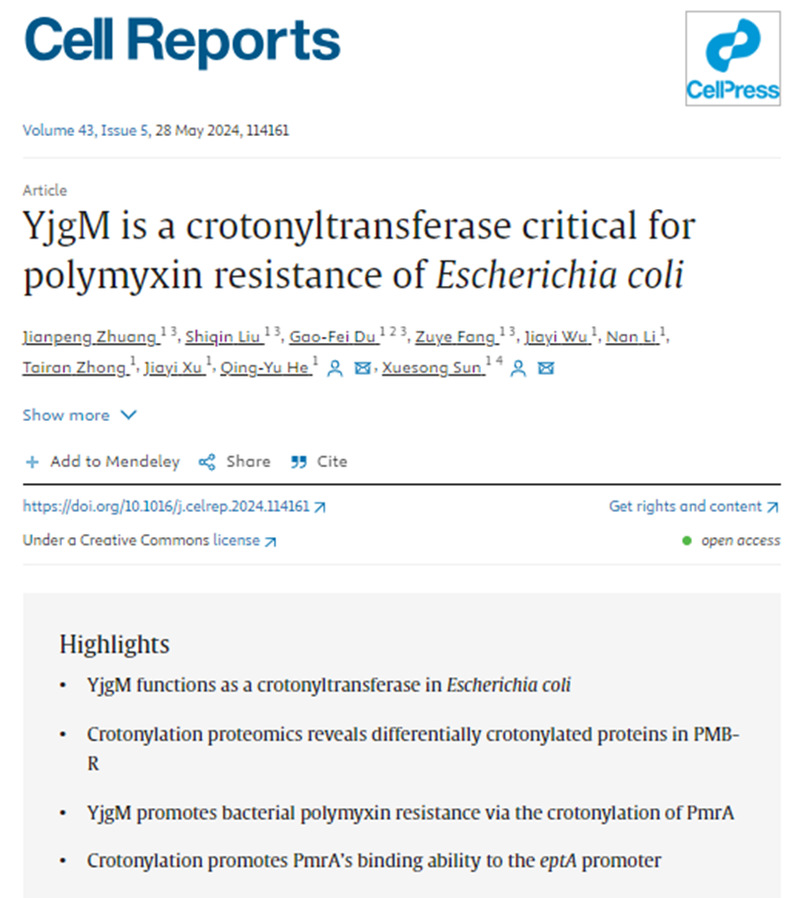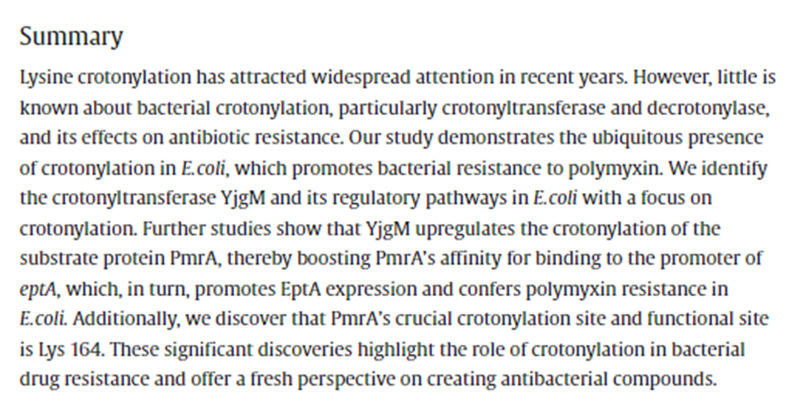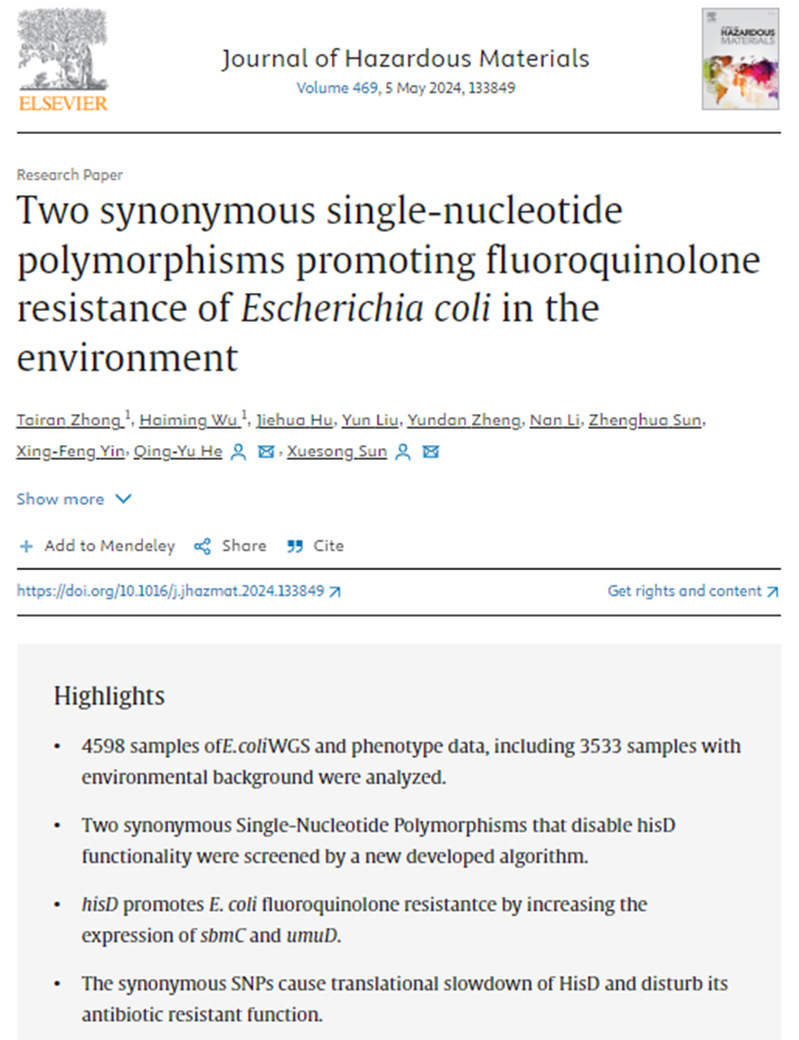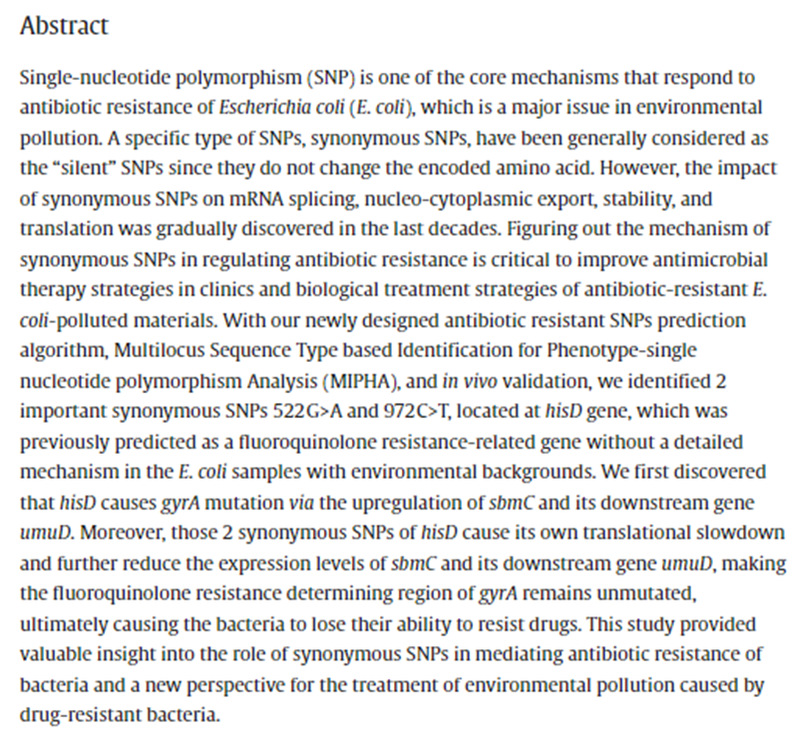- ABOUT JNU
- ADMISSION
-
ACADEMICS
- Schools and Colleges
-
Departments and Programs
- Arts College of
- Chinese Language and Culture College of
- Economics College of
- Electrical and Information Engineering College of
- Foreign Studies College of
- Information Science and Technology College of
- Environment School of
- Humanities School of
- International Business School
- International Studies School of
- Journalism and Communication College of
- Law School
- Liberal Arts College of
- Life Science and Technology College of
- Management School of
- Marxism School of
- Medicine School of
- Pharmacy College of
- Physical Education School of
- Science and Engineering College of
- Shenzhen Tourism College
- Research Institute
- Research Center
- Programs in English
- Majors
- Study Abroad
- Online Learning
- RESEARCH
- CAMPUS LIFE
- JOIN US
JNU Research Team Unveils Novel Mechanisms of Bacterial Resistance in High-Impact Journals
Publisher: School of Life Science and Technology
Date: June 12, 2024
Breaking new ground in the realm of bacterial resistance mechanisms, a dynamic team spearheaded by Professor He Qingyu and researcher Sun Xuesong from the esteemed Department of Biochemistry at Jinan University's School of Life Science and Technology has made significant strides in their latest research endeavor. Their groundbreaking findings have been showcased in prestigious scholarly publications, including Cell Reports (CAS Zone 1, IF: 8.8, 1 article) and Journal of Hazardous Materials (CAS Zone 1, IF: 13.6, 2 articles).


(Screenshot of the paper)
In a feat of scientific excellence, Researcher Sun Xuesong and Professor He Qingyu stand as the co-corresponding authors for three seminal papers that delve into the intricate nuances of bacterial resistance. Master's students Zhuang Jianpeng, Zhong Tairan, alongside doctoral students Fang Zuye, all hailing from Jinan University, have emerged as the first authors of these pivotal research works, signaling a collaborative effort towards scientific advancement. Jinan University serves as the primary corresponding unit for this transformative research initiative, buoyed by substantial backing from the National Key R&D Program, the National Natural Science Foundation of China, and the Guangdong Provincial Natural Science Foundation.


(Screenshot of the paper)
Delving into the realm of post-translational protein modification (PTM), the Sun Xuesong/He Qingyu research team has laboriously unraveled the toxicity and resistance regulation mechanisms of PTM on bacteria, culminating in a series of impactful publications in renowned journals such as mSystems.
Challenging conventional wisdom, the team shed light on the overlooked functional role of synonymous mutations in bacterial resistance modulation. By analyzing the genomic and phenotypic data of 4598 Escherichia coli strains through the novel algorithm MIFHA, they pinpointed two pivotal synonymous mutations (522 G>A and 972 C>T) in the hisD gene correlating with fluoroquinolone antibiotic resistance. Mechanistic insights unveiled the intricate cascade where hisD upregulates sbmC and umuD, ultimately precipitating gyrA mutations. The aberrant translation kinetics of HisD protein triggered by synonymous mutations alters its conformation, thereby forfeiting its regulatory efficacy and rendering bacteria susceptible to antibiotic actions. This groundbreaking revelation opens a new vista in understanding the underpinnings of bacterial resistance emergence and evolution.
The detailed findings of these seminal works can be accessed at the following links:
1.[Cell Reports :
DOI: 10.1016/j.celrep.2024.114161] (https://doi.org/10.1016/j.celrep.2024.114161)
2.[Journal of Hazardous Materials:
DOI: 10.1016/j.jhazmat.2024.133849] (https://doi.org/10.1016/j.jhazmat.2024.133849)
3.[Journal of Hazardous Materials:
DOI: 10.1016/j.jhazmat.2024.133453] (https://doi.org/10.1016/j.jhazmat.2024.133453)
NEWS
- About the University
- Quick Links
Copyright © 2016 Jinan University. All Rights Reserved.




